View in other NatureServe Network Field Guides
NatureServe
Montana
Utah
Wyoming
Idaho
Wisconsin
British Columbia
South Carolina
Yukon
California
New York
Spoonhead Sculpin - Cottus ricei
State Rank Reason (see State Rank above)
Species has not been observed for 30 years presumably due to lack of survey effort. Trend and threats are unknown and current rarity score has a high degree of uncertainty.
General Description
The Spoonhead Sculpin is another native Montana Fish of Special Concern due to its limited Montana distribution (
Montana AFS Species Status Account). Spoonhead Sculpin are found only in the St. Mary and Waterton river drainages of Glacier National Park, which ultimately drain into Hudson Bay. They inhabit deep lakes, as well as streams, and provide forage for Lake Trout, Burbot, and other species.
For a comprehensive review of the ecology, conservation status, threats, and management of this and other Montana fish species of concern, please see
Montana Chapter of the American Fisheries Society Species of Concern Status Reviews.Diagnostic Characteristics
Spoonhead Sculpin are light brown with two to four saddles under the second dorsal fin. The underside is whitish. Spoonhead sculpin are scaleless with a complete lateral line. The mouth of a spoonhead is small and contains no palatine teeth. Most specimens have 13-15 fin rays on the anal fin (Brown, 1971). The body is slender. One pore is located on the midline under the tip of the chin. Prickles, often dense, may cover the entire body, but sometimes are sparse or absent. No other Montana sculpin has the "bison horn" spine on the gill cover.
Species Range
Montana Range
Range Descriptions
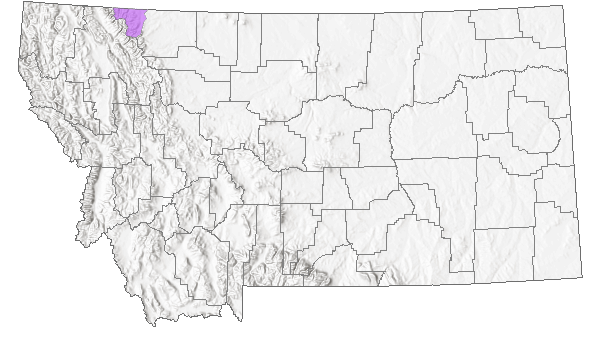
 Native
Native
Western Hemisphere Range

Range Comments
The extensive Canadian Range of the spoonhead sculpin includes the Great Lakes-St. Lawrence and Arctic basins from southern Quebec to the Mackenzie River drainage, Northwest Territories, Yukon, and northeastern British Columbia, and southern Alberta (Page and Burr 2011, Figure 1). Distribution of spoonhead sculpin in the United States includes the Great Lakes region, northern Ohio, Minnesota and Montana.
Observations in Montana Natural Heritage Program Database
Number of Observations: 5
(Click on the following maps and charts to see full sized version)
Map Help and Descriptions
Relative Density
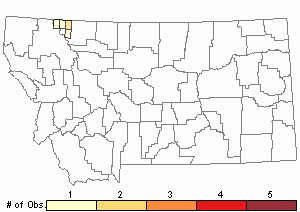
Recency
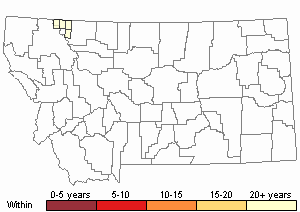
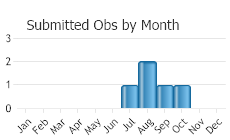
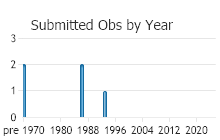
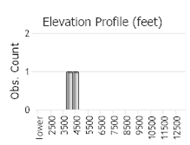 (Observations spanning multiple months or years are excluded from time charts)
(Observations spanning multiple months or years are excluded from time charts)
Habitat
Habitat includes the rocky bottoms of swift streams to larger rivers, and the shallows and deep water of lakes. They have been taken at depths of over 100 feet.
Food Habits
Spoonhead sculpin are most likely feeding on planktonic crustaceans in deep lakes and aquatic insect larvae in inshore regions.
Ecology
They are probably important forage for deep-dwelling fishes. Spoonhead scuplin have been identified as an important food source for burbot, northern pike, and lake trout (Roberts 1988).
Reproductive Characteristics
Spawning can occur in late summer to early fall in shallow gravel beds along the edge of lakes, streams and rivers (Roberts 1988, Sullivan et. al 2009).
Management
A primary focus of managing the spoonhead sculpin in Montana should be to more accurately determine the population status of the species. Efforts should be made to describe its complete range, as well as to estimate abundance at locations where its presence is currently known. Populations should be routinely monitored to describe population trends over time.
Stewardship Responsibility
Threats or Limiting Factors
Global climate change poses a significant threat to all freshwater aquatic species, especially cold-water adapted ones. U.S. Geological Survey researchers predict that slight increases in average annual air temperatures could significantly change the quality, temperature and quantity of the natural water systems around the globe (Kloepfer, 2002). The impact these changes may have on a sculpin species is unclear, especially for a glacial relict species with a restricted range such as spoonhead sculpin.
References
- Literature Cited AboveLegend:
 View Online Publication
View Online Publication Lee, D.S., C.R. Gilbert, C.H. Hocutt, R.E. Jenkins, D. E. McAllister, J. R. Stauffer, Jr. 1980. Atlas of North American freshwater fishes. North Carolina State Musuem of Natural History. 867 p.
Lee, D.S., C.R. Gilbert, C.H. Hocutt, R.E. Jenkins, D. E. McAllister, J. R. Stauffer, Jr. 1980. Atlas of North American freshwater fishes. North Carolina State Musuem of Natural History. 867 p. Montana Chapter of the American Fisheries Society species status accounts.
Montana Chapter of the American Fisheries Society species status accounts. Scott, W.B. and E.J. Crossman. 1973. Rainbow trout, Kamloops trout, Steelhead trout Salmo gairdneri Richardson. pp. 184-191. In: Freshwater fishes of Canada. Ottawa, Canada: Fisheries Research Board of Canada, Bulletin 184. 966 p.
Scott, W.B. and E.J. Crossman. 1973. Rainbow trout, Kamloops trout, Steelhead trout Salmo gairdneri Richardson. pp. 184-191. In: Freshwater fishes of Canada. Ottawa, Canada: Fisheries Research Board of Canada, Bulletin 184. 966 p.
- Additional ReferencesLegend:
 View Online Publication
View Online Publication
Do you know of a citation we're missing? Hendricks, P. 1997. Status, distribution, and biology of sculpins (Cottidae) in Montana: a review. Unpublished report to USDA Forest Service. 29pp.
Hendricks, P. 1997. Status, distribution, and biology of sculpins (Cottidae) in Montana: a review. Unpublished report to USDA Forest Service. 29pp. Houston, J. 1990. Status of the spoonhead sculpin, Cottus ricei, in Canada. Canadian Field-Naturalist. 104:14-19.
Houston, J. 1990. Status of the spoonhead sculpin, Cottus ricei, in Canada. Canadian Field-Naturalist. 104:14-19. Joslin, Gayle, and Heidi B. Youmans. 1999. Effects of recreation on Rocky Mountain wildlife: a review for Montana. [Montana]: Montana Chapter of the Wildlife Society.
Joslin, Gayle, and Heidi B. Youmans. 1999. Effects of recreation on Rocky Mountain wildlife: a review for Montana. [Montana]: Montana Chapter of the Wildlife Society. Potter, R. L., and G. W. Fleischer. 1992. Reappearance of spoonhead sculpins (Cottus ricei) in Lake Michigan. J. Great Lakes Res. 18:755-758.
Potter, R. L., and G. W. Fleischer. 1992. Reappearance of spoonhead sculpins (Cottus ricei) in Lake Michigan. J. Great Lakes Res. 18:755-758.
- Web Search Engines for Articles on "Spoonhead Sculpin"
- Additional Sources of Information Related to "Fish"





